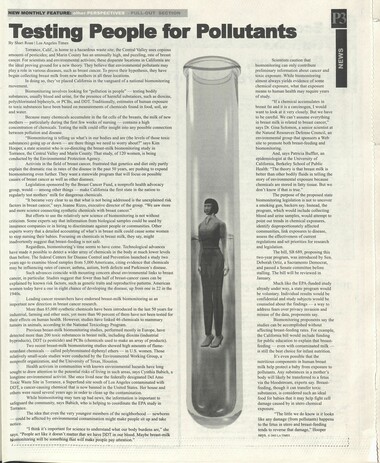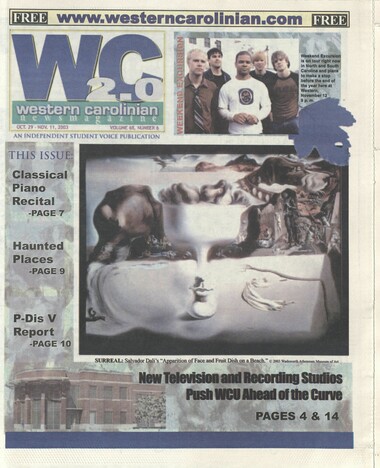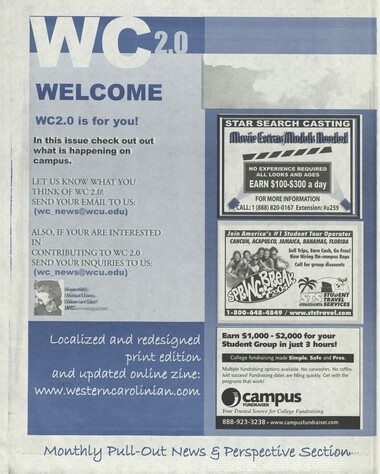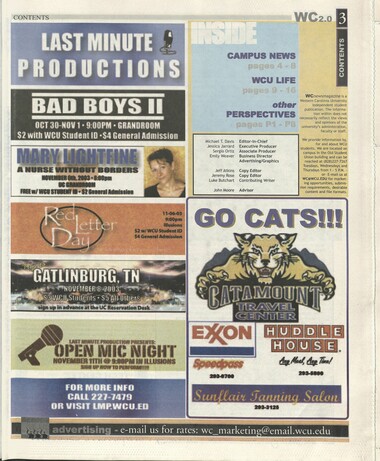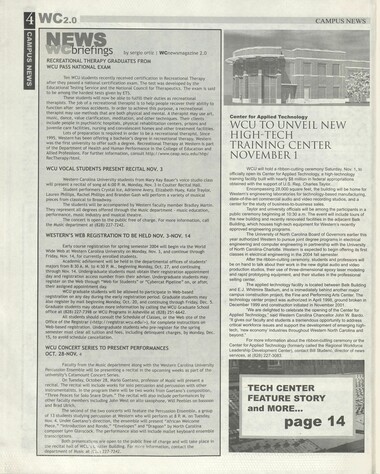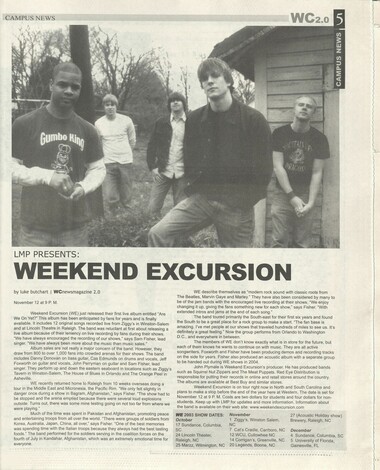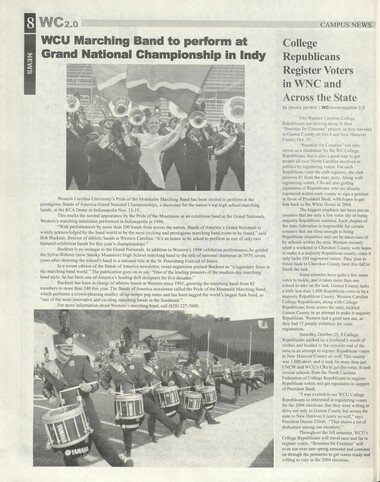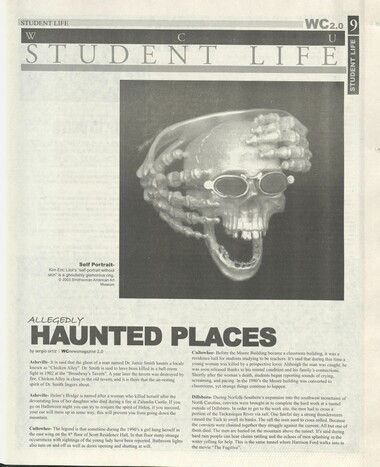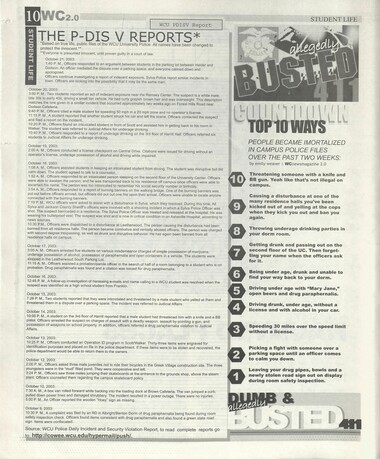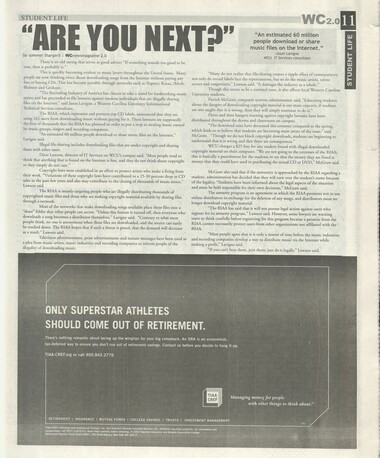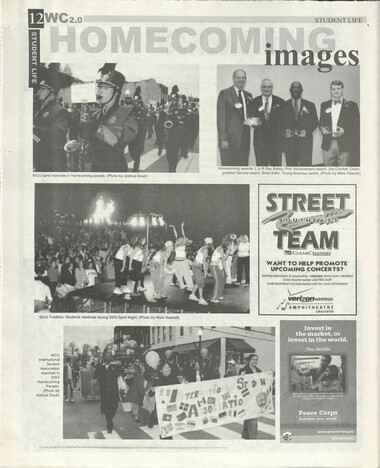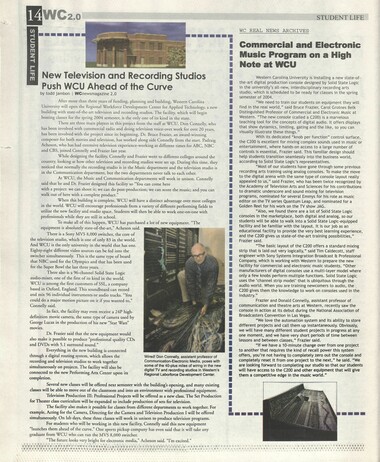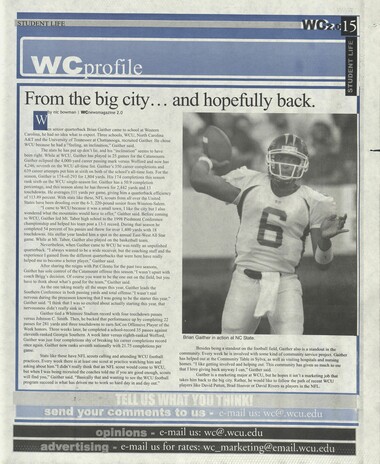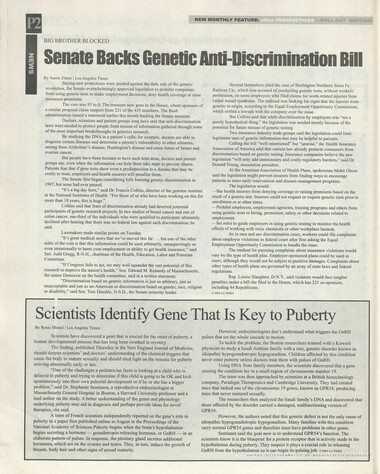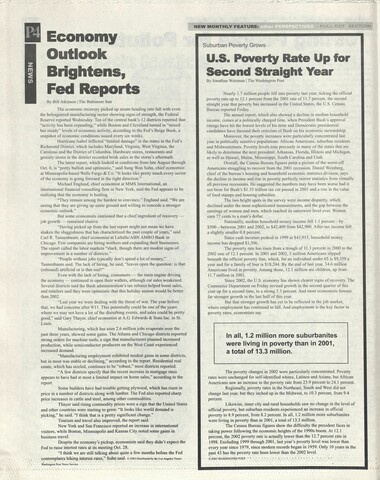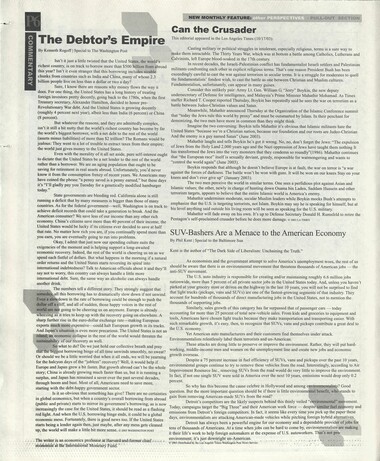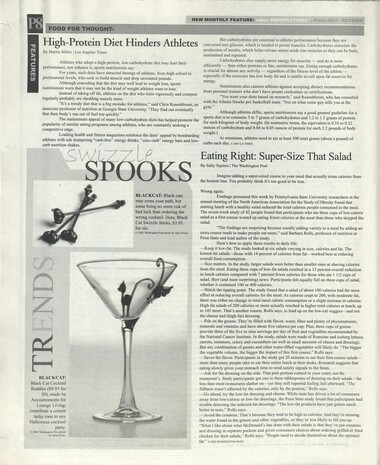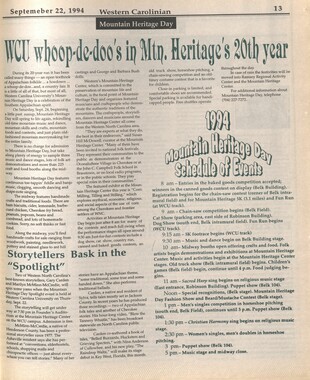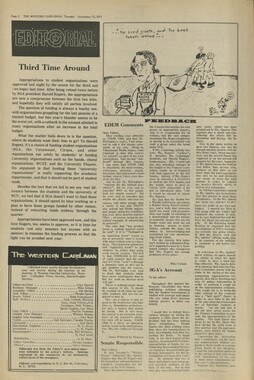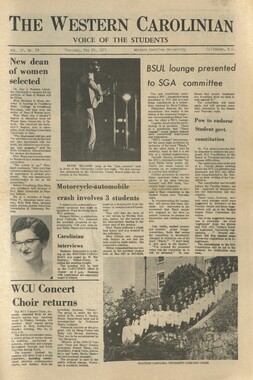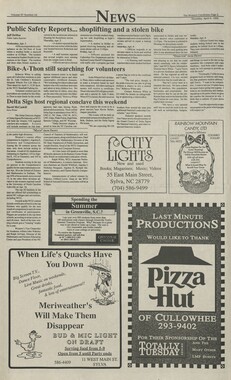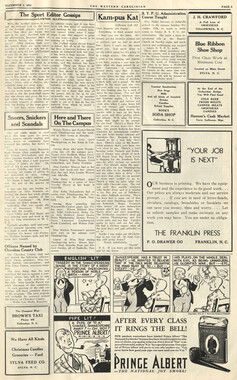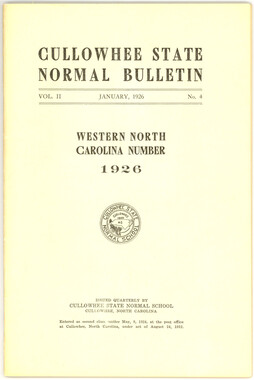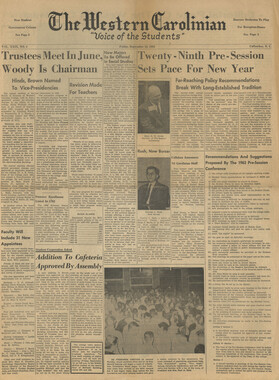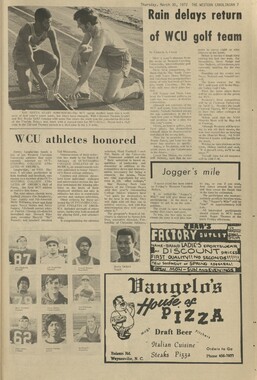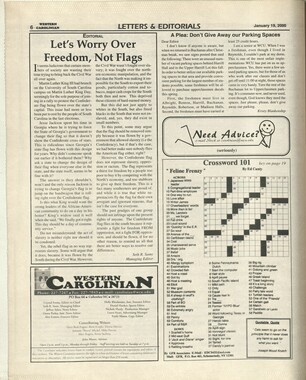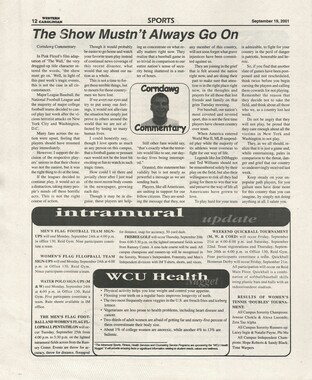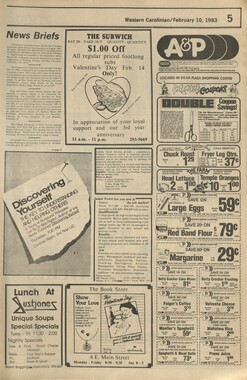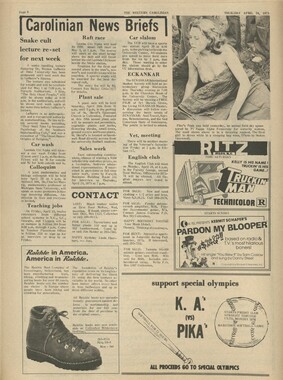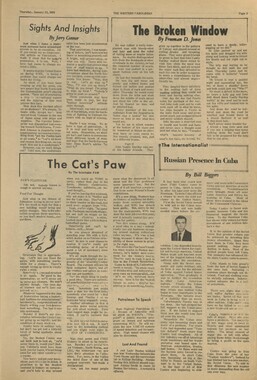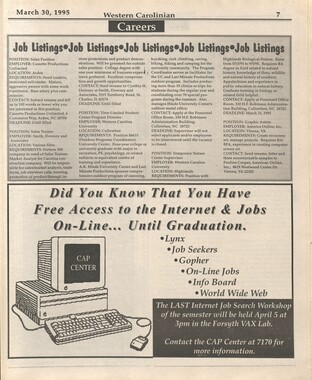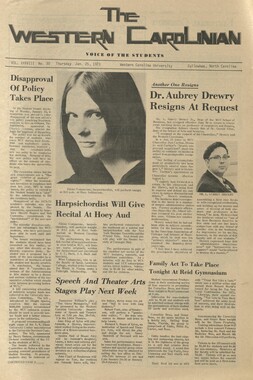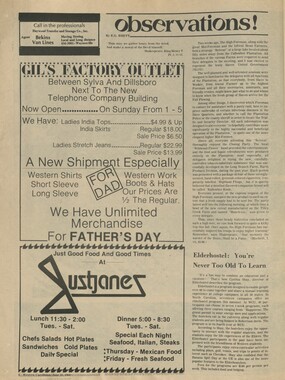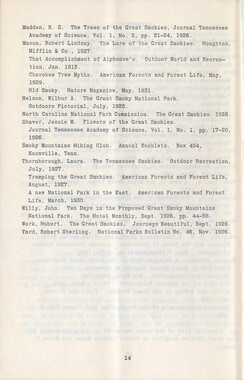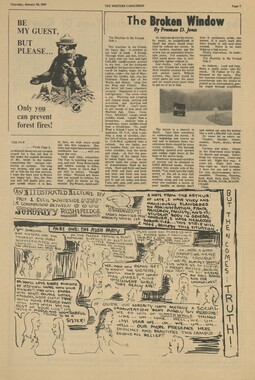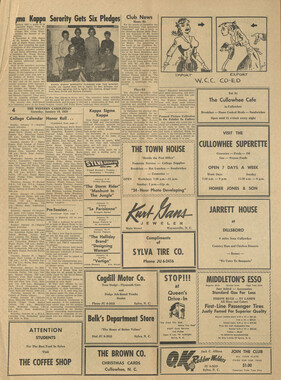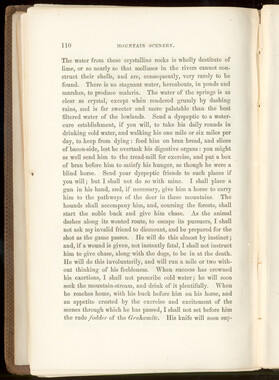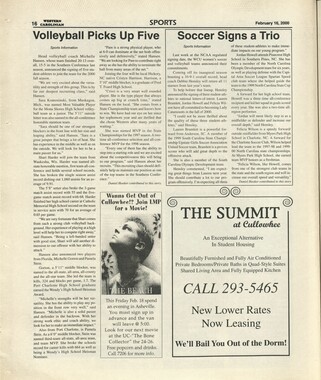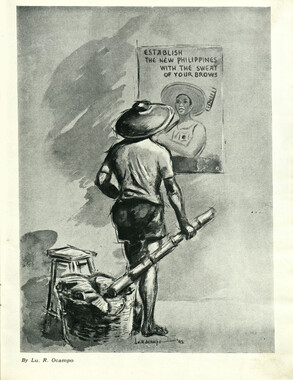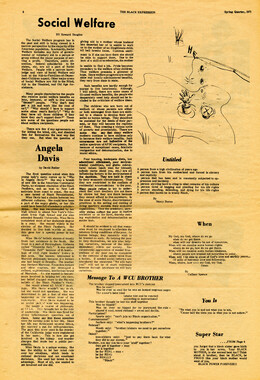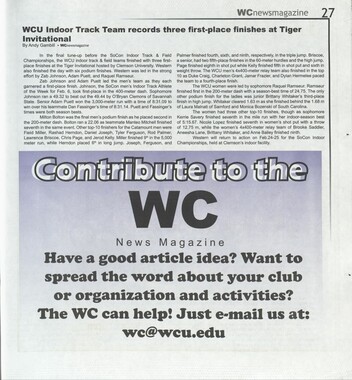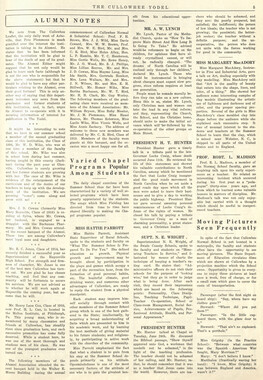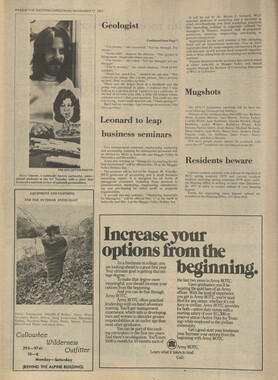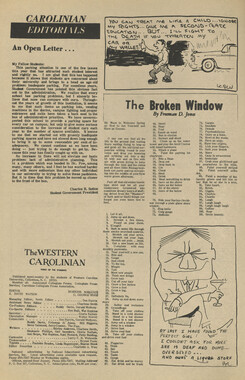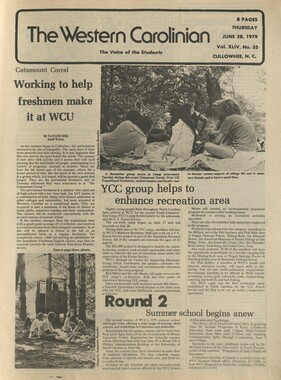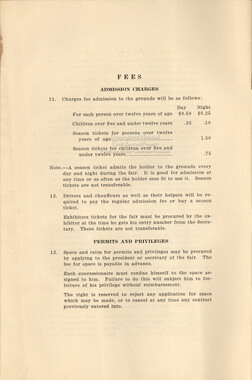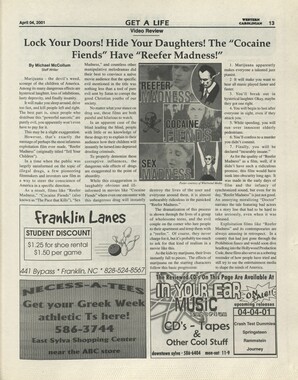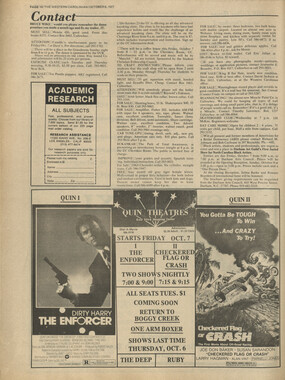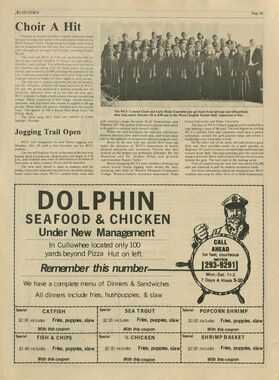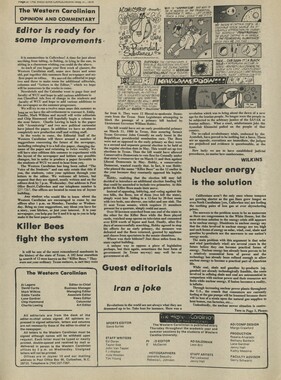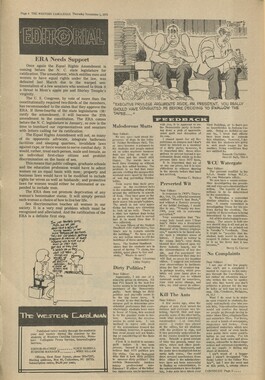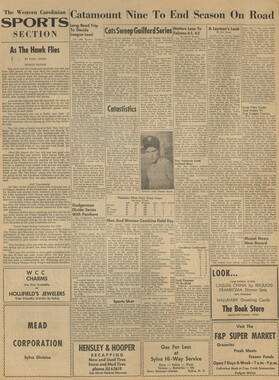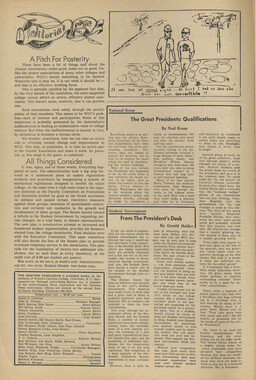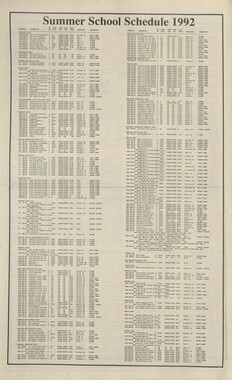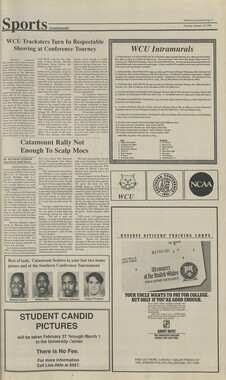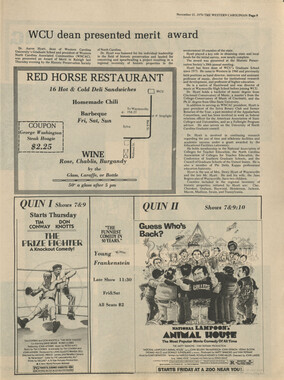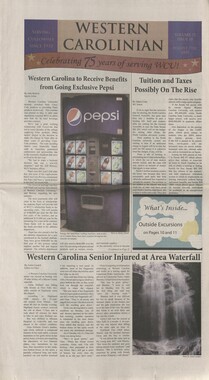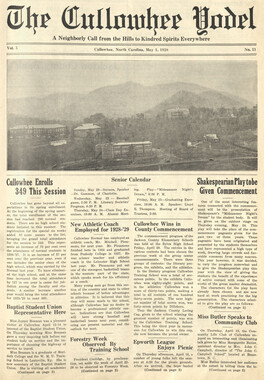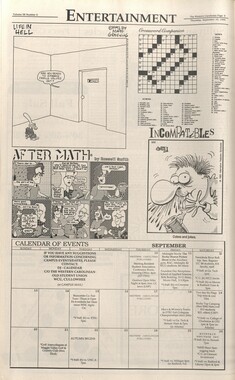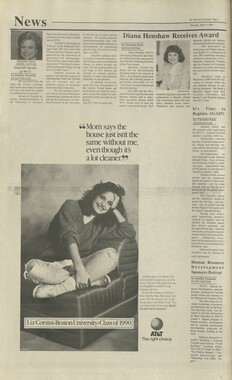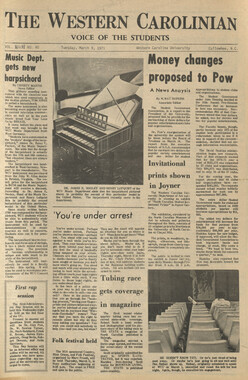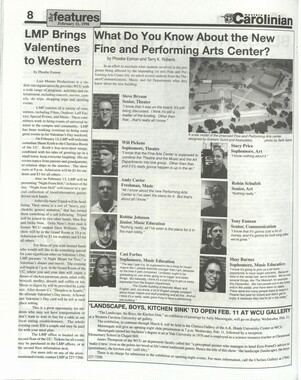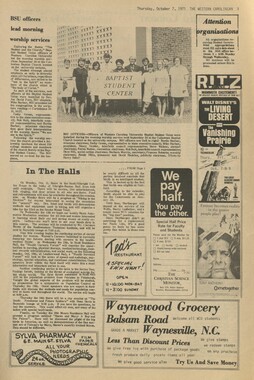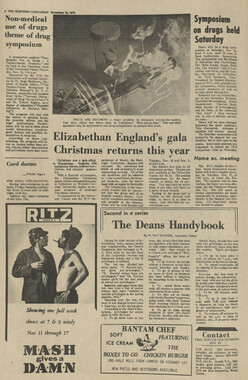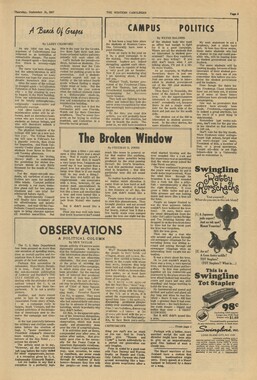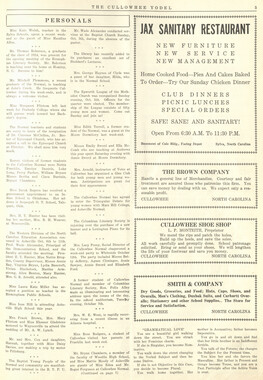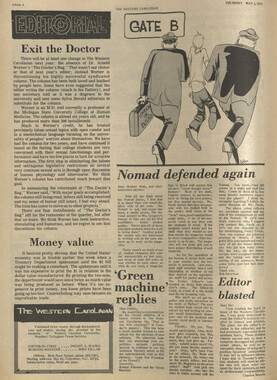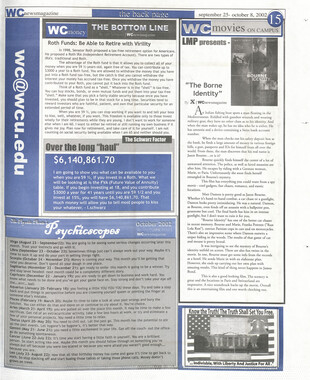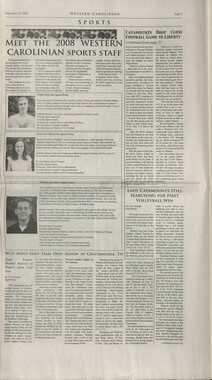Western Carolina University (20)
View all
- Canton Champion Fibre Company (2308)
- Cherokee Traditions (291)
- Civil War in Southern Appalachia (165)
- Craft Revival (1942)
- Great Smoky Mountains - A Park for America (2946)
- Highlights from Western Carolina University (430)
- Horace Kephart (941)
- Journeys Through Jackson (159)
- LGBTQIA+ Archive of Jackson County (85)
- Oral Histories of Western North Carolina (314)
- Picturing Appalachia (6873)
- Stories of Mountain Folk (413)
- Travel Western North Carolina (160)
- Western Carolina University Fine Art Museum Vitreograph Collection (129)
- Western Carolina University Herbarium (92)
- Western Carolina University: Making Memories (738)
- Western Carolina University Publications (2491)
- Western Carolina University Restricted Electronic Theses and Dissertations (146)
- Western North Carolina Regional Maps (71)
- World War II in Southern Appalachia (131)
University of North Carolina Asheville (6)
View all
- Allanstand Cottage Industries (62)
- Appalachian National Park Association (53)
- Bennett, Kelly, 1890-1974 (1463)
- Berry, Walter (76)
- Brasstown Carvers (40)
- Carver, George Washington, 1864?-1943 (26)
- Cathey, Joseph, 1803-1874 (1)
- Champion Fibre Company (233)
- Champion Paper and Fibre Company (297)
- Cherokee Indian Fair Association (16)
- Cherokee Language Program (22)
- Crowe, Amanda (40)
- Edmonston, Thomas Benton, 1842-1907 (7)
- Ensley, A. L. (Abraham Lincoln), 1865-1948 (275)
- Fromer, Irving Rhodes, 1913-1994 (70)
- George Butz (BFS 1907) (46)
- Goodrich, Frances Louisa (120)
- Grant, George Alexander, 1891-1964 (96)
- Heard, Marian Gladys (60)
- Kephart, Calvin, 1883-1969 (15)
- Kephart, Horace, 1862-1931 (313)
- Kephart, Laura, 1862-1954 (39)
- Laney, Gideon Thomas, 1889-1976 (439)
- Masa, George, 1881-1933 (61)
- McElhinney, William Julian, 1896-1953 (44)
- Niggli, Josephina, 1910-1983 (10)
- North Carolina Park Commission (105)
- Osborne, Kezia Stradley (9)
- Owens, Samuel Robert, 1918-1995 (11)
- Penland Weavers and Potters (36)
- Roberts, Vivienne (15)
- Roth, Albert, 1890-1974 (142)
- Schenck, Carl Alwin, 1868-1955 (1)
- Sherrill's Photography Studio (2565)
- Southern Highland Handicraft Guild (127)
- Southern Highlanders, Inc. (71)
- Stalcup, Jesse Bryson (46)
- Stearns, I. K. (213)
- Thompson, James Edward, 1880-1976 (226)
- United States. Indian Arts and Crafts Board (130)
- USFS (683)
- Vance, Zebulon Baird, 1830-1894 (1)
- Weaver, Zebulon, 1872-1948 (58)
- Western Carolina College (230)
- Western Carolina Teachers College (282)
- Western Carolina University (2008)
- Western Carolina University. Mountain Heritage Center (18)
- Whitman, Walt, 1819-1892 (10)
- Wilburn, Hiram Coleman, 1880-1967 (73)
- Williams, Isadora (3)
- Cain, Doreyl Ammons (0)
- Crittenden, Lorraine (0)
- Rhodes, Judy (0)
- Smith, Edward Clark (0)
- Appalachian Region, Southern (2569)
- Asheville (N.C.) (1923)
- Avery County (N.C.) (26)
- Blount County (Tenn.) (195)
- Buncombe County (N.C.) (1672)
- Cherokee County (N.C.) (283)
- Clay County (N.C.) (555)
- Graham County (N.C.) (236)
- Great Smoky Mountains National Park (N.C. and Tenn.) (519)
- Haywood County (N.C.) (3569)
- Henderson County (N.C.) (70)
- Jackson County (N.C.) (4912)
- Knox County (Tenn.) (35)
- Knoxville (Tenn.) (13)
- Lake Santeetlah (N.C.) (10)
- Macon County (N.C.) (420)
- Madison County (N.C.) (215)
- McDowell County (N.C.) (39)
- Mitchell County (N.C.) (132)
- Polk County (N.C.) (35)
- Qualla Boundary (982)
- Rutherford County (N.C.) (76)
- Swain County (N.C.) (2182)
- Transylvania County (N.C.) (270)
- Watauga County (N.C.) (12)
- Waynesville (N.C.) (86)
- Yancey County (N.C.) (72)
- Aerial Photographs (3)
- Aerial Views (60)
- Albums (books) (4)
- Articles (1)
- Artifacts (object Genre) (228)
- Bibliographies (1)
- Biography (general Genre) (2)
- Cards (information Artifacts) (38)
- Clippings (information Artifacts) (191)
- Copybooks (instructional Materials) (3)
- Crafts (art Genres) (622)
- Depictions (visual Works) (21)
- Design Drawings (1)
- Drawings (visual Works) (185)
- Envelopes (73)
- Exhibitions (events) (1)
- Facsimiles (reproductions) (1)
- Fiction (general Genre) (4)
- Financial Records (12)
- Fliers (printed Matter) (67)
- Glass Plate Negatives (381)
- Guidebooks (2)
- Internegatives (10)
- Interviews (815)
- Land Surveys (102)
- Letters (correspondence) (1013)
- Manuscripts (documents) (618)
- Maps (documents) (177)
- Memorandums (25)
- Minutes (administrative Records) (59)
- Negatives (photographs) (6090)
- Newsletters (1290)
- Newspapers (2)
- Notebooks (8)
- Occupation Currency (1)
- Paintings (visual Works) (1)
- Pen And Ink Drawings (1)
- Periodicals (193)
- Personal Narratives (10)
- Photographs (12976)
- Plans (maps) (1)
- Poetry (5)
- Portraits (4568)
- Postcards (329)
- Programs (documents) (181)
- Publications (documents) (2443)
- Questionnaires (65)
- Relief Prints (26)
- Sayings (literary Genre) (1)
- Scrapbooks (282)
- Sheet Music (2)
- Slides (photographs) (402)
- Songs (musical Compositions) (2)
- Sound Recordings (796)
- Specimens (92)
- Speeches (documents) (18)
- Tintypes (photographs) (8)
- Transcripts (322)
- Video Recordings (physical Artifacts) (23)
- Text Messages (0)
- A.L. Ensley Collection (275)
- Appalachian Industrial School Records (7)
- Appalachian National Park Association Records (336)
- Axley-Meroney Collection (2)
- Bayard Wootten Photograph Collection (20)
- Bethel Rural Community Organization Collection (7)
- Blumer Collection (5)
- C.W. Slagle Collection (20)
- Canton Area Historical Museum (2110)
- Carlos C. Campbell Collection (462)
- Cataloochee History Project (64)
- Cherokee Studies Collection (4)
- Daisy Dame Photograph Album (5)
- Daniel Boone VI Collection (1)
- Doris Ulmann Photograph Collection (112)
- Elizabeth H. Lasley Collection (1)
- Elizabeth Woolworth Szold Fleharty Collection (4)
- Frank Fry Collection (95)
- George Masa Collection (173)
- Gideon Laney Collection (452)
- Hazel Scarborough Collection (2)
- Hiram C. Wilburn Papers (28)
- Historic Photographs Collection (236)
- Horace Kephart Collection (861)
- Humbard Collection (33)
- Hunter and Weaver Families Collection (1)
- I. D. Blumenthal Collection (4)
- Isadora Williams Collection (4)
- Jesse Bryson Stalcup Collection (47)
- Jim Thompson Collection (224)
- John B. Battle Collection (7)
- John C. Campbell Folk School Records (80)
- John Parris Collection (6)
- Judaculla Rock project (2)
- Kelly Bennett Collection (1482)
- Love Family Papers (11)
- Major Wiley Parris Civil War Letters (3)
- Map Collection (12)
- McFee-Misemer Civil War Letters (34)
- Mountain Heritage Center Collection (4)
- Norburn - Robertson - Thomson Families Collection (44)
- Pauline Hood Collection (7)
- Pre-Guild Collection (2)
- Qualla Arts and Crafts Mutual Collection (12)
- R.A. Romanes Collection (681)
- Rosser H. Taylor Collection (1)
- Samuel Robert Owens Collection (94)
- Sara Madison Collection (144)
- Sherrill Studio Photo Collection (2558)
- Smoky Mountains Hiking Club Collection (616)
- Stories of Mountain Folk - Radio Programs (374)
- The Reporter, Western Carolina University (510)
- Venoy and Elizabeth Reed Collection (16)
- WCU Gender and Sexuality Oral History Project (32)
- WCU Mountain Heritage Center Oral Histories (25)
- WCU Oral History Collection - Mountain People, Mountain Lives (71)
- WCU Students Newspapers Collection (1923)
- Western North Carolina Tomorrow Black Oral History Project (69)
- William Williams Stringfield Collection (2)
- Zebulon Weaver Collection (109)
- African Americans (390)
- Appalachian Trail (35)
- Artisans (521)
- Cherokee art (84)
- Cherokee artists -- North Carolina (10)
- Cherokee language (21)
- Cherokee pottery (101)
- Cherokee women (208)
- Church buildings (189)
- Civilian Conservation Corps (U.S.) (111)
- College student newspapers and periodicals (2012)
- Dams (107)
- Dance (1023)
- Education (222)
- Floods (61)
- Folk music (1015)
- Forced removal, 1813-1903 (2)
- Forest conservation (220)
- Forests and forestry (1184)
- Gender nonconformity (4)
- Great Smoky Mountains National Park (N.C. and Tenn.) (181)
- Hunting (45)
- Landscape photography (25)
- Logging (119)
- Maps (83)
- Mines and mineral resources (8)
- North Carolina -- Maps (18)
- Paper industry (38)
- Postcards (255)
- Pottery (135)
- Railroad trains (72)
- Rural electrification -- North Carolina, Western (3)
- School integration -- Southern States (2)
- Segregation -- North Carolina, Western (5)
- Slavery (5)
- Sports (452)
- Storytelling (243)
- Waterfalls -- Great Smoky Mountains (N.C. and Tenn.) (66)
- Weaving -- Appalachian Region, Southern (280)
- Wood-carving -- Appalachian Region, Southern (328)
- World War, 1939-1945 (173)
Western Carolinian Volume 68 Number 06
Item
Item’s are ‘child’ level descriptions to ‘parent’ objects, (e.g. one page of a whole book).
-
-
Testing People for Pollutants By Shari Roan | Los Angeles Times Torrance, Calif., is home to a hazardous waste site; the Central Valley uses copious amounts of pesticides; and Marin County has an unusually high, and puzzling, rate of breast cancer. For scientists and environmental activists, these disparate locations in California are the ideal proving ground for a new theory. They believe that environmental pollutants may play a role in various diseases, such as breast cancer. To prove their hypothesis, they have begun collecting breast milk from new mothers in all three locations. In doing so, theyve placed California in the vanguard of a national biomonitoring movement. Biomonitoring involves looking for pollution in people testing bodily substances, usually blood and urine, for the presence of harmful substances, such as dioxins, polychlorinated biphenyls, or PCBs, and DDT. Traditionally, estimates of human exposure to toxic substances have been based on measurements of chemicals found in food, soil, air and water. Because many chemicals accumulate in the fat cells of the breasts, the milk of new mothers particularly during the first few weeks of nursing contains a high concentration of chemicals. Testing the milk could offer insight into any possible connection between pollution and disease. Biomonitoring is telling us whats in our bodies and are (the levels of those toxic substances) going up or down are there things we need to worry about? says Kim Hooper, a state scientist who is co-directing the breast-milk biomonitoring study in Torrance, the Central Valley and Marin County. That study, of 120 women, is being conducted by the Environmental Protection Agency. Activists in the field of breast cancer, frustrated that genetics and diet only partly explain the dramatic rise in rates of the disease in the past 50 years, are pushing to expand biomonitoring even further. They want a statewide program that will focus on possible causes of breast cancer as well as other diseases. Legislation sponsored by the Breast Cancer Fund, a nonprofit health advocacy group, would among other things make California the first state in the nation to regularly test mothers milk for dangerous chemicals. Tt became very clear to us that what is not being addressed is the unexplained risk factors in breast cancer, says Jeanne Rizzo, executive director of the group. We saw more and more science connecting synthetic chemicals with breast cancer. But efforts to use the relatively new science of biomonitoring is not without criticism. Some experts say that information from biological samples could be used by insurance companies or in hiring to discriminate against people or communities. Other experts worry that a detailed accounting of whats in breast milk could cause some women to stop nursing their babies. Focusing on chemicals in breast milk, they say, might inadvertently suggest that breast-feeding is not safe. Regardless, biomonitorings time seems to have come. Technological advances have made it possible to detect a wider array of chemicals in the body at much lower levels than before. The federal Centers for Disease Control and Prevention launched a study two years ago to examine blood samples from 5,000 Americans, citing evidence that chemicals may be influencing rates of cancer, asthma, autism, birth defects and Parkinsons disease. Such advances coincide with mounting concern about environmental links to breast cancer, in particular. Studies suggest that fewer than half of breast-cancer cases can be explained by known risk factors, such as genetic traits and reproductive patterns. American women today have a one in eight chance of developing the disease, up from one in 22 in the 1940s. Leading cancer researchers have endorsed breast-milk biomonitoring as an important new direction in breast cancer research. More than 85,000 synthetic chemicals have been introduced in the last 50 years for industrial, farming and other uses, yet more than 90 percent of them have not been tested for their effects on human health. However, studies have linked 46 chemicals to mammary tumors in animals, according to the National Toxicology Program. Previous breast-milk biomonitoring studies, performed mostly in Europe, have detected more than 200 toxic substances in breast milk, including dioxins (industrial byproducts), DDT (a pesticide) and PCBs (chemicals used to make an array of products). Two recent breast-milk biomonitoring studies showed high amounts of flame- retardant chemicals called polybrominated diphenyl ethers in U.S. women. Those relatively small-scale studies were conducted by the Environmental Working Group, a nonprofit organization, and the University of Texas, Houston. Health activists in communities with known environmental hazards have long sought to draw attention to the potential risks of living in such areas, says Cynthia Babich, a longtime environmental activist. She once lived near the federally designated Del Amo Toxic Waste Site in Torrance, a Superfund site south of Los Angeles contaminated with DDT, a cancer-causing chemical that is now banned in the United States. Her house and others were razed several years ago in order to clean up the contamination. While biomonitoring may turn up bad news, the information is important to safeguard the community, says Babich, who is helping to coordinate the EPA study in Torrance. The idea that even the very youngest members of the neighborhood newborns could be affected by environmental contamination might make people sit up and take notice. T think its important for science to understand what our body burdens are, she says. People act like it doesnt matter that we have DDT.in our blood. Maybe breast-milk biomonitoring will be something that will make people pay attention. Ba noosa bh hsb ah hob sg akg eee ee ee a Scientists caution that biomonitoring can only contribute preliminary information about cancer and toxic exposure. While biomonitoring almost always yields evidence of some chemical exposure, what that exposure means to human health may require years of study. Tf a chemical accumulates in breast fat and it is a carcinogen, I would want to look at it very closely. But we have to be careful. We cant assume everything in breast milk is related to breast cancer, says Dr. Gina Solomon, a senior scientist at the Natural Resources Defense Council, an environmental group that sponsors a Web site to promote both breast-feeding and biomonitoring. And, says Patricia Buffler, an epidemiologist at the University of California, Berkeley School of Public Health: The theory is that breast milk is better than other bodily fluids in telling the story of environmental exposure because chemicals are stored in fatty tissue. But we dont know if that is true. The purpose of the proposed state biomonitoring legislation is not to uncover a smoking gun, backers say. Instead, the program, which would include collecting blood.and urine samples, would attempt to point out trends in chemical exposures, identify disproportionately affected communities, link exposures to disease, assess the effectiveness of current regulations and set priorities for research and legislation. The bill, SB 689, proposing this two-year program, was introduced by Sen. Deborah Ortiz, a Sacramento Democrat, and passed a Senate committee before stalling. The bill will be reviewed in January. Much like the EPA-funded study already under way, a state program would be voluntary. Individual results would be confidential and study subjects would be counseled about the findings a way to address fears over privacy invasion and misuse of the data, proponents say. Biomonitoring proponents say the studies can be accomplished without affecting breast-feeding rates. For example, the California bill would include funding for public education to explain that breast- feeding even with contaminated milk is still the best choice for infant nutrition. Its even possible that the nutritious components in human breast milk help protect a baby from exposure to pollutants. Any substances in a mothers body will likely be transferred to a fetus via the bloodstream, experts say. Breast- feeding, though it can transfer toxic substances, is considered such an ideal food for babies that it may help fight cell damage caused by in utero chemical exposure. The little we do know is it looks like any damage (from pollutants) happens to the fetus in utero and breast-feeding tends to reverse that damage, Hooper SAYS. 2003 LA TIMES ; ; 4 Pardee eae Tae ee ee ee ee a ne ae ir td a ee eee fit A ln Abe 2 a Os ethan a EG AH m
Object
Object’s are ‘parent’ level descriptions to ‘children’ items, (e.g. a book with pages).
-
The Western Carolinian is Western Carolina University's student-run newspaper. The paper was published as the Cullowhee Yodel from 1924 to 1931 before changing its name to The Western Carolinian in 1933.
-
